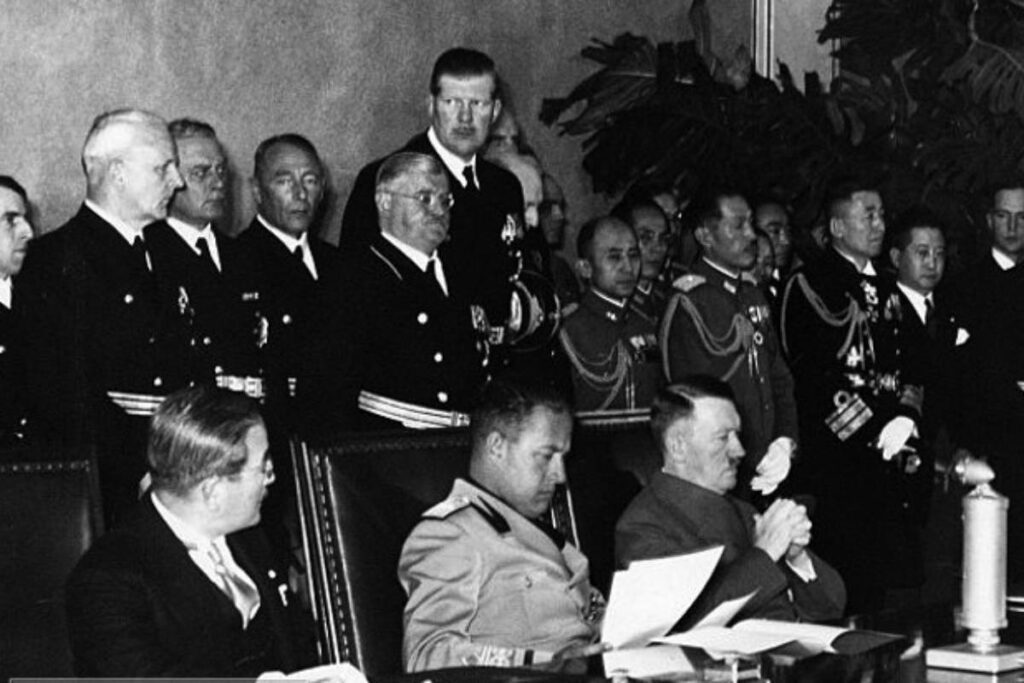If there is something more potent than a collaboration between two nations, it’s going to be a collaboration between three. But when it’s three world powers who can shake the world individually, then it gets even cooler.
Recently, people have been toying with the unlikely idea that the United States, China, and Russia could make this happen. As fantastic as it might seem for the three ego-filled nations to bury their differences, history has shown that nothing is impossible.
There have been several such powerful alliances in the past. These historical collaborations have been the subject of recent social media discussions. Here, we’d examine these past tripartite unions and consider what a “new US-China-Russia alliance” could mean for the world.
The United States, Russia, and China forming a team? That would be wishing for the impossible. There have been many decades of rivalry, grudges, and suspicion between them. For them to bury all of this baggage would be nothing short of a miracle. But it is possible.
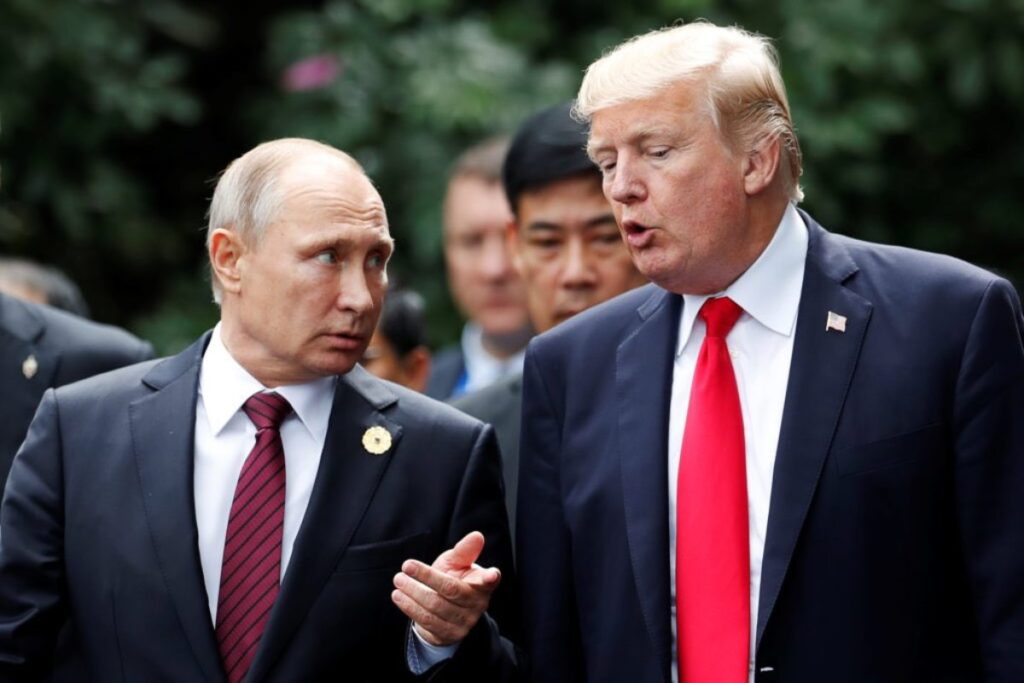
Uniting the United States, Russia, and China will be tantamount to uniting the world. The three world superpowers represent almost every national interest on the global stage. The United States will protect the interests of Israel, Australia, Japan, South Korea, the United Kingdom, France, Germany, and many countries in the EU.
English-speaking and predominantly Christian countries in Africa and across the world will also likely line up behind. For Russia and China, most dictatorial regimes such as Venezuela, North Korea, and Cuba will be implicated.
Most notably, the highly volatile nations in the Arab and Persian world will follow their lead. These include Iraq, Iran, Yemen, Kuwait, and the Palestinian territories. Some North African countries, as well as South Africa. It would be ten times more potent than the Big Three alliance of World War 2.
Here’s How a US-China-Russia Alliance Will Change the World
A strong partnership between the United States, China, and Russia will be an alliance never before seen in the history of the world. If this were to happen, all three countries would rule the world without any competition.
Just like such an alliance will provide many advantages, it could also become a harmful venture and a big mistake for the rest of the world. One reason for this is the overwhelming dominance such a collaboration will give these countries over the rest of the world.
As it is, all three countries are significant players in the global scene. They each possess a combination of numerical, economic, technological, and military strength that sets them apart from the rest of the world. A combination of all these will simply be indomitable.
The United States
With its massive population of over 340 million people, the United States is the world’s biggest economy. Its currency, the dollar, is the world’s benchmark currency and a significant factor in the nation’s global financial dominance.

The United States is also a leader in technology and innovation. Most of the world’s cyber inventions have emanated from Silicon Valley.
The nation is a leader in AI, cybersecurity, and by far the most successful nation in space exploration. The United States Army, with its cutting-edge military technology, is arguably the most formidable in the world.
China
China is just behind the United States in terms of economic size. This second-largest economy in the world is boosted by the enterprise and brilliance of over 1.4 billion people. China also enjoys the enviable position as the world’s leader in manufacturing and infrastructural development.
The Asian giant is also a hub for technology. It is a leading innovator in AI, 5G, and the manufacturing of high-tech devices. It also dominates the electric vehicle industry. China has also made significant strides in space exploration.
Military-wise, China is a force to be reckoned with. It has the largest army in terms of personnel as well as an intimidating array of high-tech military arsenal.
Russia
Russia is a world leader in energy. It dominates the global energy market as one of the largest owners of crude oil and natural gas. Russia is also a major exporter of military equipment.
The former USSR’s backbone has made a considerable mark in space exploration. It launched the first ever space satellite and has been consistent in its space ambitions.
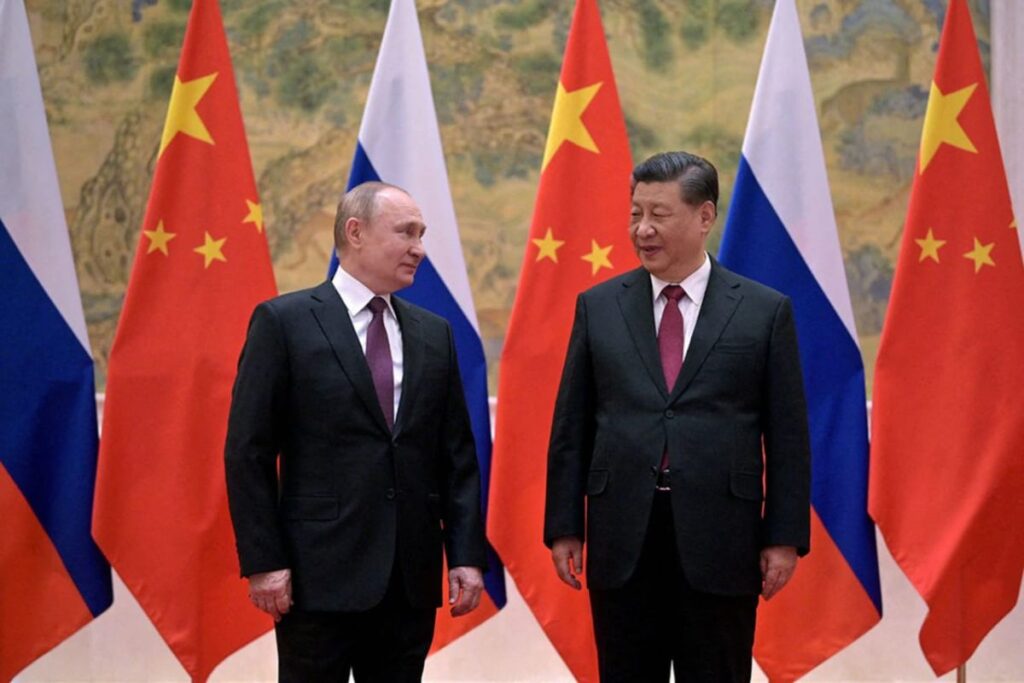
Its military and intelligence agencies are some of the fiercest in the world. Russia spends a lot of money on defense for its over 145 million residents. Its annual defense budget runs up to $145 billion. As a result, it has become the go-to country for ammunition.
Who Were the Big 3 Allies in WW2?
World War 2 gave the world a glimpse of how powerful a tripartite partnership could be. This alliance resulted in what is known as the “Big Three” Allies, comprising the United States, the United Kingdom, and the Soviet Union.
The three powerhouses were the arrowheads of the Allied Powers, who, in many opinions, were the protagonists of the war. From 1939 to 1945, the “Big Three” Allies provided leadership to several other nations in their bid to defeat the Axis Powers of Germany, Italy, and Japan.
However, despite the numerous differences in the way this Big Three partnership operates, they managed to stay united and focused on their shared values. Mutual distrust and clash of ideas and strategy were dwarfed by their desire to crush their enemies.
To keep the partnership running, the three had to engage in a series of talks. They held conferences to align their plans—the first, in November 1943, held in Tehran, Iran. There, the three leaders—Franklin Roosevelt, Winston Churchill, and Joseph Stalin—finalized their initial war plans.
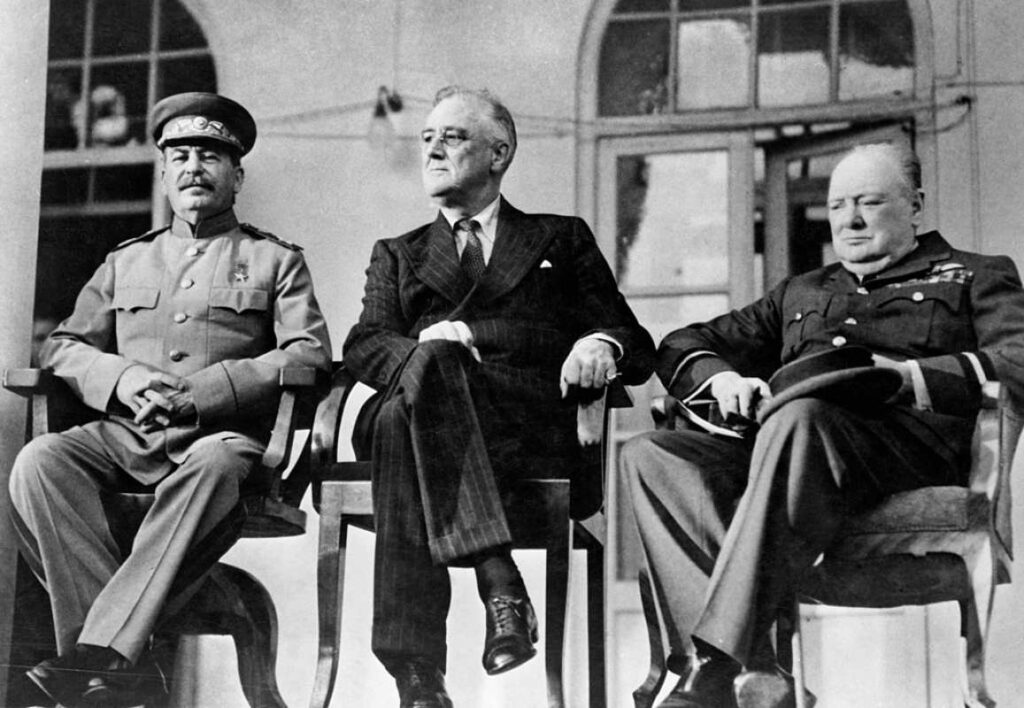
Two years later, they held another in Yalta, in present-day Ukraine, but currently administered by Russia. The third conference took place 5 months later in Potsdam, near Berlin, Germany, where they made post-war plans. This was in July 1945.
They had just defeated the Axis powers, who proved a formidable opposition. The Axis Powers were more united. Thanks to an impressive agreement known as the Tripartite Pact.
What Was the Tripartite Pact?
Months after the “Big Three” Alliance emerged, Japan, Italy, and Germany formed the Axis Powers. The Tripartite Pact was the agreement that cemented their partnership during World War II. It was a document that spelt out their mutual support and collaboration during the war.
On September 27, 1940, the Tripartite Pact was ready. It was signed in Berlin by Adolf Hitler of Germany, Benito Mussolini of Italy, and Prince Konoye, who led the government of Japan. Hungary was the fourth signatory.
The primary aim of the agreement was to discourage the United States from joining the allied forces. At the time, the United States had yet to pick a side in the conflict officially.
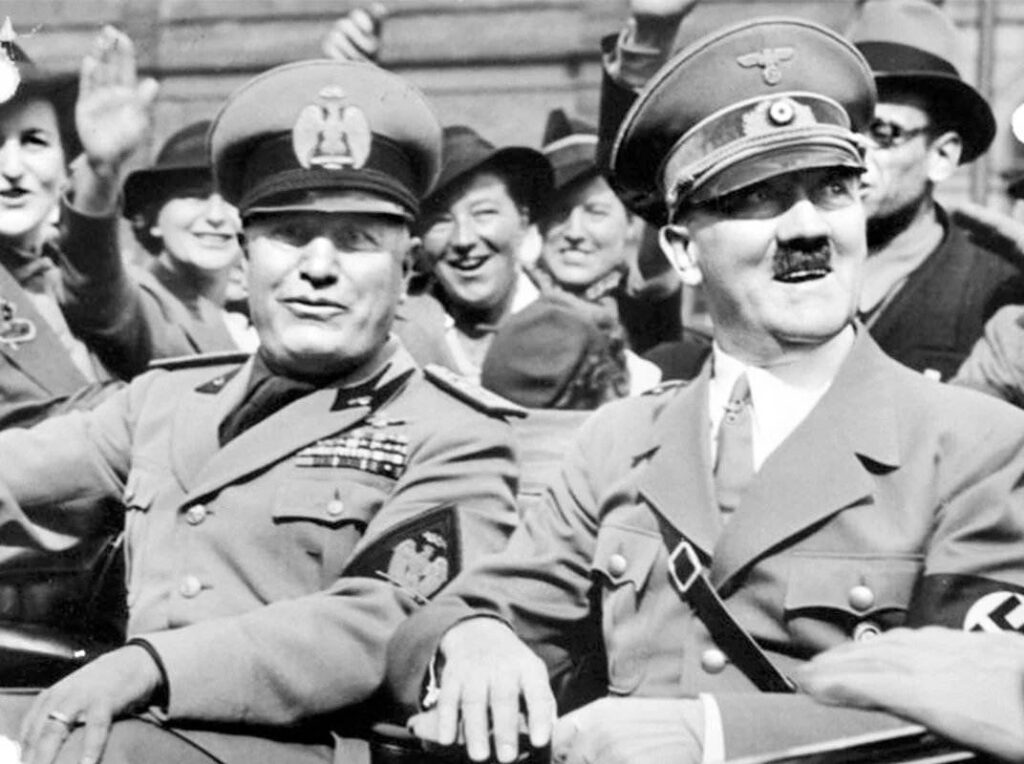
Sensing that the Americans were likely to join the opposite side, the Tripartite Pact outlined attack moves to be meted out to it if it joined the enemy side. As it turned out, the pact wasn’t enough to scare off the Americans.
Although the Tripartite Pact was a strong show of unity, it crumbled along with the declining firepower of its signatories. All three of its arrowheads fell under the weight of the allied forces and rendered the pact useless.
What Alliances Were Formed After World War II?
After the Second World War, other countries took a cue from the Allied and Axis Powers. Groups of three nations came together for tripartite agreements. Some were successful, others weren’t so successful.
USA-UK-France Tripartite Agreement of 1950
In light of growing tensions in the Middle East, the trio of the United States, the United Kingdom, and France met and struck a deal. It was called the Tripartite Agreement of 1950. Signed on May 25, 1950, its primary objective was to promote a more lasting peace in the Middle East.
At the time, the world was still reeling from the effects of the Arab-Israeli war in 1948. The agreement aimed to protect the territorial understanding between Israel and its neighboring Arab nations, such as Egypt, Syria, Jordan, and Lebanon.
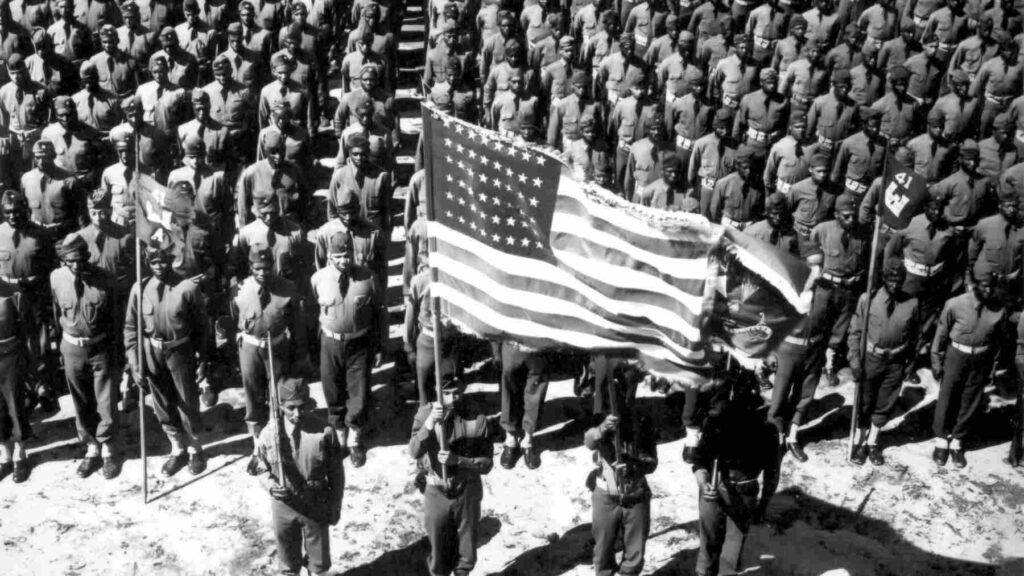
The three nations vowed to discourage any further use of force by the conflicting parties. They also decided to regulate their arms sales to Israel and the Arabs. However, this agreement was violated by France when it secretly sold weapons to Israel in 1956.
The Baghdad Pact: UK-Turkey-Iraq
The next major tripartite pact was reached by the UK, Turkey, and Iraq on February 24, 1955. Called the Baghdad Pact or the Middle East Treaty Organization and later renamed the Central Treaty Organization (CENTO), it aimed to counter Soviet influence during the Cold War.
The agreement received the backing of the United States and other nations, who later joined in. These late members were Iran and Pakistan. All these nations sought to diminish Soviet power in the Middle East by protecting Western interests.
However, the pact didn’t survive for long. After the 1958 revolution in Iraq, the country’s new leadership pulled out of the deal. Egypt and Syria opposed the pact. In addition, the absence of a collaborative military force all contributed to its collapse.
Will a US-China-Russia Pact Benefit the World?
Likely yes! If we think about the exciting implications such a momentous alliance will have for global peace, then you would admit that it’s worth dreaming about. However, we would have to close our eyes to the potential risk of global domination by three giants at the same time.
All of these possibilities will depend on many factors. The three nations have a rough history with each other. Only a very appetizing common interest would do the magic of uniting them. But this is global politics, where nothing is impossible.


